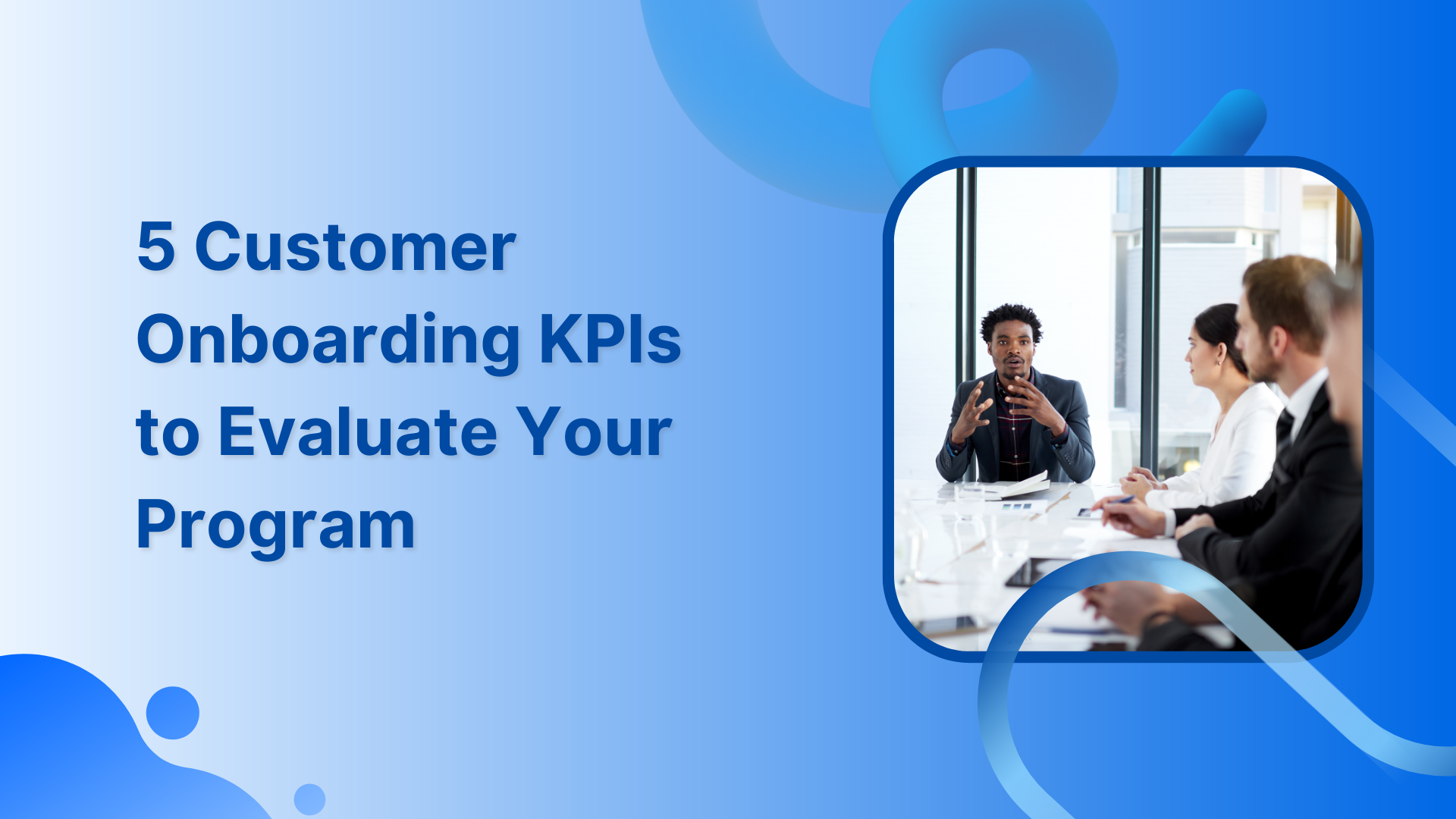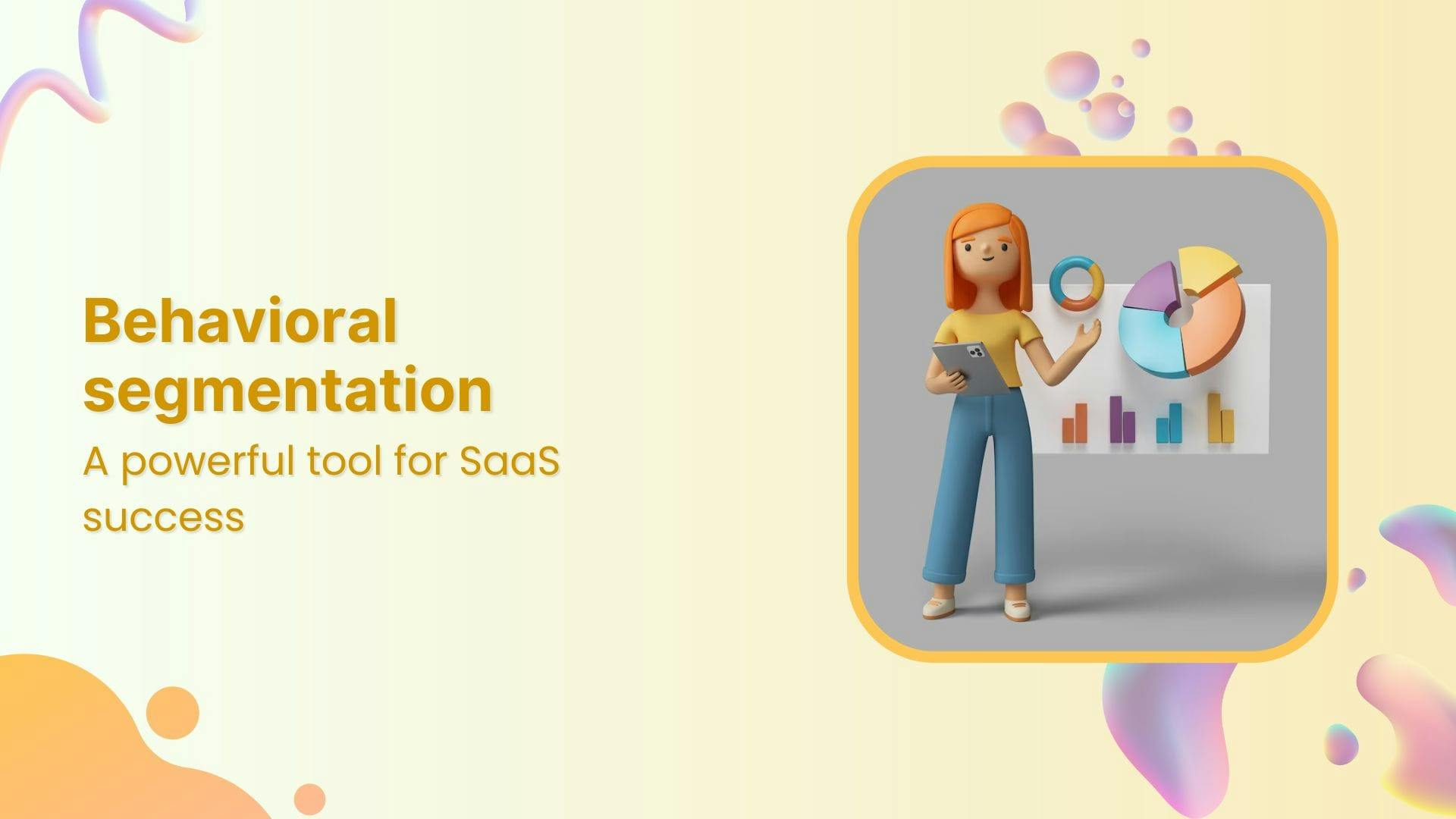
5 Customer Onboarding KPIs to Evaluate Your Program
Sep 22, 2022
5 mins read
Are you looking for ways to measure the success of your customer onboarding program? If so, you're in the right place. In this blog post, we'll share five of the most essential customer onboarding KPIs to track so you can identify areas for improvement.
By tracking customer onboarding KPIs, you'll be able to ensure that your customers are getting the most out of your product or service.
Customer Onboarding KPIs You Should Track
- Customer satisfaction score
- Net promoter score
- Customer lifetime value
- Customer retention rate
- Customer acquisition costs
Time to First Value
How long does it take for your customers to see value in your product?
This is an important metric to track especially during the onboarding phase. Time to First Value (TTFV) measures how long it takes for a customer to receive their first positive ROI from using your product.
There are a few different ways to calculate TTFV. The most common method is to take the number of days from when a customer first subscribes or buys your product until they reach a specific goal or see a specific ROI. This goal could be something like making their first sale if you’re an e-commerce platform, or getting their first lead if you’re a CRM.
Once you have your TTFV number, you can start to break it down and see where there might be room for improvement. For example, if you have a TTFV of 30 days, you can look at the 7, 14, and 21-day marks to see how many customers are still in the onboarding phase and how many have reached their goal. This will help you identify any roadblocks in the onboarding process.
If you’re not sure where to start, a good place to begin is by looking at your customer support tickets. This will give you a good idea of where people are getting stuck and what areas need improvement.
Customer Churn Rate
Customer churn rate is one of the most important customer onboarding KPIs. It measures the percentage of customers who stop doing business with a company over a given period of time. It's also sometimes called customer attrition rate or customer turnover rate.
Why is customer churn rate important?
Customer churn rate is important because it can give you insights into how well your company is retaining customers. If you have a high customer churn rate in the onboarding phase, it means that you're losing customers at a faster rate than you're gaining them. This can be a problem because it can lead to declining revenue and profits.
How can you reduce your customer churn rate?
There are a few things you can do to reduce customer churn rate:
- Improve customer service.
- Offer more competitive prices.
- Increase customer loyalty.
- Improve customer retention.
- Improve the customer experience.
What are some best practices for reducing customer churn rate?
Here are a few best practices for reducing customer churn rate:
- Make it easy for customers to do business with you.
- Communicate regularly with your customers.
- Keep your promises.
- Show your customers that you value them.
- Make it easy for customers to give you feedback.
Net Promoter Score (NPS)

If you're like most business owners, you're always looking for ways to improve your customer onboarding framework. A great way to do this is to use the Net Promoter Score (NPS).
One of the most valuable customer onboarding metrics, the NPS is a customer satisfaction metric that measures how likely your customers are to recommend your business to others. It's a simple way to gauge customer satisfaction and can be a valuable metric to track over time.
To calculate your NPS, you simply ask your customers how likely they are to recommend your business on a scale of 0-10. Customers who respond with a 9 or 10 are considered "promoters", while those who respond with a 0-6 are considered "detractors".
The NPS can be a valuable metric for tracking customer satisfaction over time. It can also help you identify areas of your customer onboarding process that need improvement.
If you're looking for ways to improve your customer onboarding process, the Net Promoter Score is a great place to start.
Cost Per Acquisition (CPA)
One of the customer onboarding KPIs that can help you boost profits and reduce costs is the CPA or cost per acquisition. CPA is a measure of how much it costs you to acquire a new customer. By reducing your CPA, you can increase your profits and grow your business.
There are a number of ways to reduce your CPA. One way is to improve your customer onboarding framework. By making it easier and more efficient for new customers to get started with your product or service, you can reduce your CPA.
There are a number of KPIs you can track to measure the success of your customer onboarding process.
- The number of new customers who complete the onboarding process.
- The percentage of new customers who complete the onboarding process.
- The average time it takes new customers to complete the onboarding process.
- The number of new customers who cancel their subscription within the first month.
- The percentage of new customers who cancel their subscription within the first month.
By tracking these customer onboarding metrics, you can identify areas where your customer onboarding process can be improved. and by making improvements to your customer onboarding processes, you can reduce your CPA and increase your profits.
Lifetime Value (LTV)
Customer lifetime value is one of the customer onboarding metrics that determine the profitability of your business.
The more money each customer spends on your products, the more profitable your business will be.
There are a number of factors that go into customer lifetime value (LTV), but one of the most important is customer onboarding.
User onboarding is the process of getting new customers acquainted with your product or service. The onboarding phase is a critical step in the customer journey, and if done correctly, can have a major impact on LTV.
There are a number of KPIs that can help determine customer lifetime value.
- Customer Retention Rate: This measures the percentage of customers who continue using your product or service after the free trial period expires.
- Customer Engagement: This measures how often customers use your product or service.
- Net Promoter Score: This measures how likely customers are to recommend your product or service to others.
- Customer Churn Rate: This measures the percentage of customers who stop using your product or service.
- Average Revenue Per User: This measures the average amount of money that each customer spends with your company.
All of these KPIs are important, but if you want to maximize LTV, then you need to focus on two in particular: customer retention and customer engagement.
If you can keep your customers around for the long haul and get them using your product or service on a regular basis, then you'll be well on your way to increasing customer LTV.
Frequently Asked Questions
How do you measure customer onboarding success?
There are a few key customer onboarding metrics that can be used to measure customer onboarding success. These include customer satisfaction, engagement, and retention rates. Additionally, companies can track how many customers complete the onboarding process and how long it takes them to do so.
What is the scorecard used for onboarding a customer?
The scorecard is used to track the progress of customer onboarding processes and to identify any areas where the customer may need additional support.
How do you track user onboarding?
There are a few key ways to track customer onboarding data:
1. Set up specific goals and objectives for the user onboarding process, and track progress against those. This could include things like time to complete key tasks, the number of support tickets submitted, etc.
2. Use customer feedback surveys to gauge satisfaction levels and identify areas for improvement.
3. Keep an eye on key customer onboarding metrics such as customer churn rate and product usage statistics.
Conclusion
As you can see, there are a variety of ways to measure the success of your user onboarding program. By tracking these customer onboarding KPIs, you'll be able to ensure that your customers are getting the most out of your product or service.

Know what's happening at every touchpoint of your users’ journey with AI-powered analytics.
It's 100% Free to Try!


